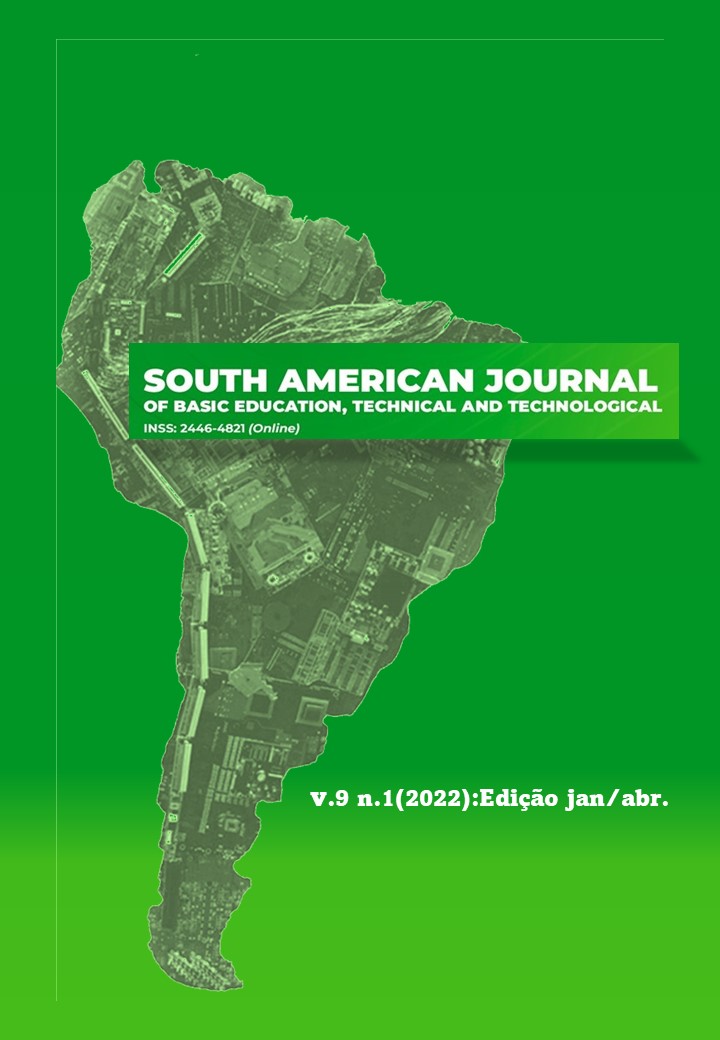POTENCIALIDADE DO Inga edulis Mart. COMO PLANTA FACILITADORA AO INÍCIO DE DESENVOLVIMENTO DO CUPUAÇU (BRS - CARIMBÓ)
Keywords:
Inga edulis Mart., planta facilitadora, cupuaçu, sistema agroflorestal, adubo verde arbóreoAbstract
The aim of this study was to evaluate the effect of Inga edulis Mart. as a nurse plant in the development of plant seedlings of cupuaçu (Theobroma grandiflorum (Willd. ex Spreng.) K. Schum, cultivar (BRS-Carimbó). The experiment was conducted in a completely randomized design with two treatments (2 cropping systems) and 12 repetitions, each plant considered a repetition. The pruning management of the inga plants, concerning the frequency and height of pruning, varied according to the time of the year and height of the cupuaçu seedlings. The height and the stem diameter of the cupuaçu seedlings were compared in a period of 2 years. The growth measures in diameter and height of cupuaçu were submitted to the test normality and the averages compared by T test at 95% confidence level, resulting in the rejection of the null hypothesis of equality of means. Therefore, it is clear that the inga (leguminous tree) successfully established facilitation interactions for cupuaçu seedlings, making the fertile soil with favorable conditions for growth. Moreover, the application of effective microorganisms most likely improved the quality of the organic matter from the pruning of inga plants.
Downloads
References
[2] CALLAWAY, R. M. Positive interactions among plants. Bot Rev 61: 306–49, 1995.
[3] CALLAWAY, R. M.; WALKER, L. R. Competition and facilitation: a synthetic approach to interactions in plant communities. Ecology 78: 1958–65, 1997.
[4] KEDDY, P. A.; SHIPLEY, B. Competitive hierarchies in herbaceous plant communities. Oikos 54:234-241, 1989.
[5] ACRE - ZEE Fase II. Zoneamento ecológico econômico do Acre, fase II. Mapas temáticos: o6 solos. Disponível em: <www.agencia.ac.gov.br/index.php/zee.htm>, Acesso em janeiro de 2015.
[6] CASALI, V. W. D. Caderno dos microrganismos eficientes (EM): Instruções práticas sobre o uso ecológico e social do EM. Viçosa, MG, 2009. 31p.
[7] OLIVEIRA, A. F. G. Testes estatísticos para comparação de médias. Artigo número 76. Revista Eletrônica Nutritime, v.5, n° 6, p.777-788 Novembro/Dezembro 2008.
[8] SOUSA, G. F.; OLIVEIRA, L. A.; SOUZA, A. G.C.; MOREI RA, A. Produção e crescimento de cupuaçuzeiro em sistemas agroflorestais no Município de Presidente Figueiredo, Estado do Amazonas. III Congresso Brasileiro de Sistemas Agroflorestais.
[9] ARRUDA, M. R.; COSTA, J. R. Importância e alguns aspectos no uso de leguminosas na Amazônia. Embrapa Amazônia Ocidental. 40p. 2003.
[10] ARCO-VERDE, M. F.; SILVA, I. C.; MOURÃO JÚNIOR, M. Aporte de nutrientes e produtividade de espécies arbóreas e de cultivos agrícolas em sistemas agroflorestais na amazônia. FLORESTA, Curitiba, PR, v. 39, n. 1, p. 11-22, jan./mar. 2009.
[11] MURRAY, D.B., NICHOLS, F. 1966. Light, shade and growth in some tropical plants. In: light an ecological factor. New York: Blackwell, p. 249-263.
[12] SILVA, R. R.; FREITAS, G. A.; SIEBENEICHLER, S. C.; MATA, J. F.; CHAGAS, J. R. Desenvolvimento inicial de plântulas de Theobroma grandiflorum (Willd. ex Spreng.) Schum. sob influência de sombreamento. Acta Amazonica. vol. 37(3) 365 – 370. 2007.










